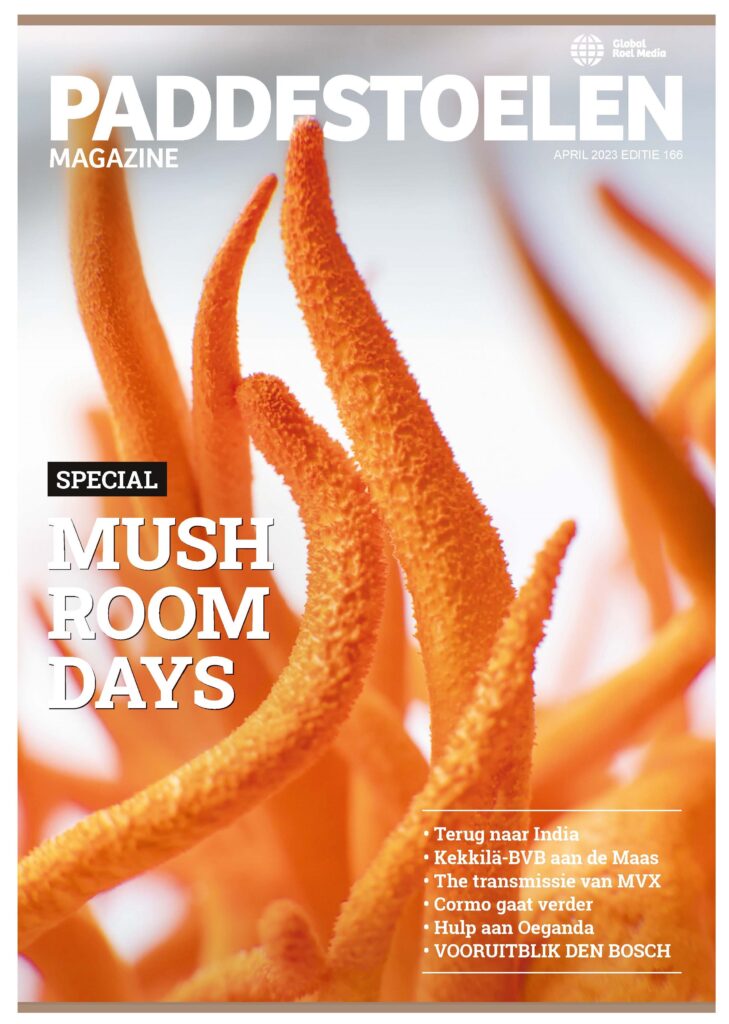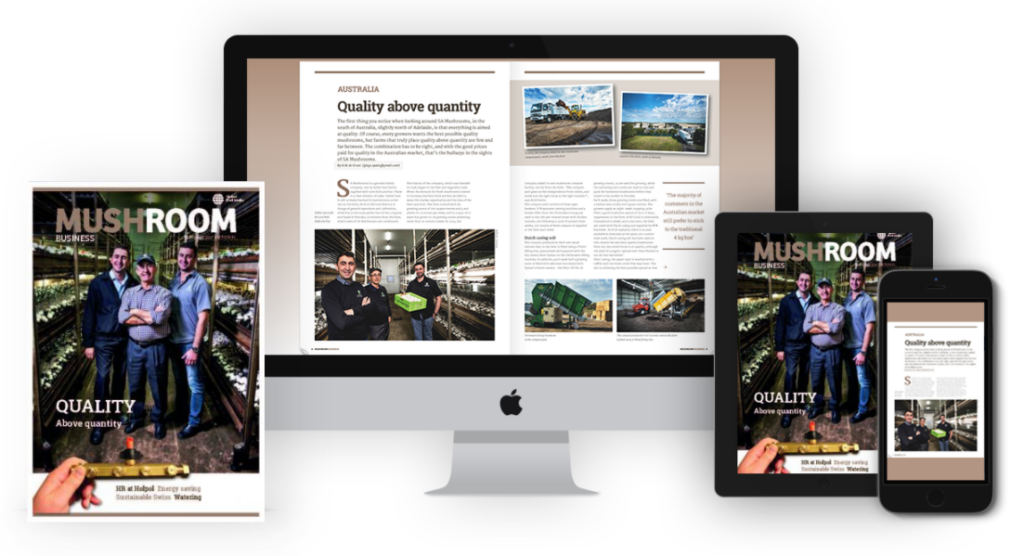You often see that compost gets wetter the further cultivation progresses. When preparing and spraying the compost and casing soil it’s not necessarily a problem if you can squeeze water from the compost. But if you can still do this after the first flush you’re in the danger zone. The continually high moisture content makes the compost extremely soft and it completely loses it’s resilience. It becomes easy to form balls of compost which are incredibly sticky.
This problem occurs frequently with over wet compost and when too little water is extracted from the compost during the first flush. Compost activity is visibly less and after the casing soil has been sprayed at the end of the first flush the beds have difficulty drying out. The second flush appears less spontaneously and the risk of bacterial blotch rises.
If these symptoms appear, spray less water during the preparatory stage. Begin by applying less or no water to the compost at filling and giving 4 to 6 litres less water when spraying the compost and casing soil to create moisture. Avoiding compacting compost at filling can also help; the result is looser airier compost in the beds. It also helps if activity in the compost is stimulated by circulating 5 to 10 % less during the first flush – which is not a problem during cold weather – and raising the air temperature by 05 to 10 degree Celsius during the third picking day if harvesting lasts for five days.
Jos Hilkens, AdVisie ‘the mushroom cultivation advisors’
hilkens@champignonadvies.nl






